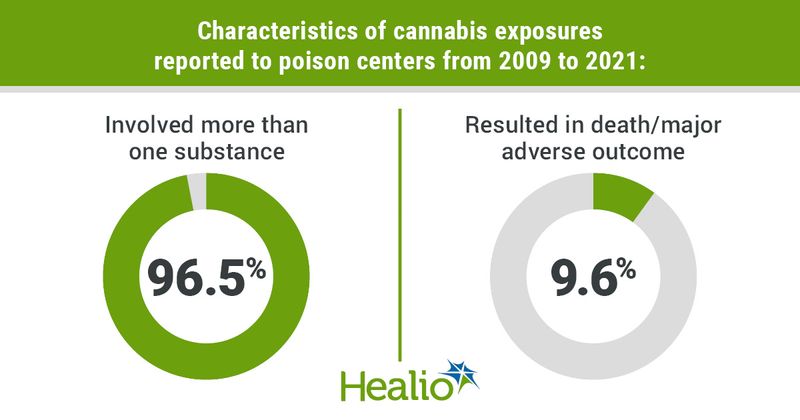Suspected suicidal cannabis use up since 2009
Key takeaways:
- Suspected suicidal cannabis exposures increased since 2009, particularly during the COVID-19 pandemic.
- Suicidal cannabis exposures often involved other substances.
The number of suspected suicidal cannabis exposures increased from 2009 to 2021, according to data published in JAMA Network Open.
“This study adds to already ample evidence that cannabis use, particularly by younger people, has significant implications for mental health,” Tracy Klein, PhD, ARNP, an associate professor of nursing at Washington State University in Spokane, said in a press release. “We don’t have evidence that cannabis alone was the primary driver of a suicide attempt, but we do know that cannabis can worsen certain mental health conditions and increase impulsivity.”

Klein and colleagues reviewed data from the National Poison Data System to identify intentional, suspected suicidal cannabis exposures reported to poison centers across the United States from 2009 to 2021. Exposures involving people aged 5 years or older were included for analyses.
Overall, there were 18,698 exposures that met the inclusion criteria. Across the study period, exposures increased by 17% annually on average. Most cannabis exposures involved more than one substance (96.5%). About one in 10 (9.6%) exposures resulted in death or other major adverse outcomes.
Analyses of exposures in 2019 and 2021 specifically revealed increases in the percentage of cases involving children (1.3% vs. 3.1%) and people reporting female sex (49.8% vs. 57%), as well as a decrease in the percentage of cases involving other substances (95.4% vs. 92.2%; all P < .001).
“We have a significant shortage of mental health and primary care providers in the United States,” Klein said in the release. “We know that mental health needs not only changed but became even more acute during the COVID-19 emergency. Cannabis is one part of that.”
Moving forward, the researchers said more research is needed as cannabis continues to be legalized across the country.
References:
- Cannabis exposures in suspected suicide attempts are on the rise. https://www.eurekalert.org/news-releases/986345. Published April 19, 2023. Accessed April 19, 2023.
- Graves JM, et al. JAMA Netw Open. 2023;doi:10.1001/jamanetworkopen.2023.9044.
